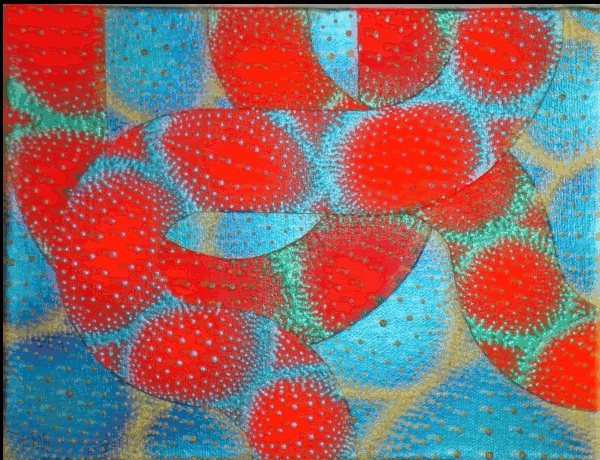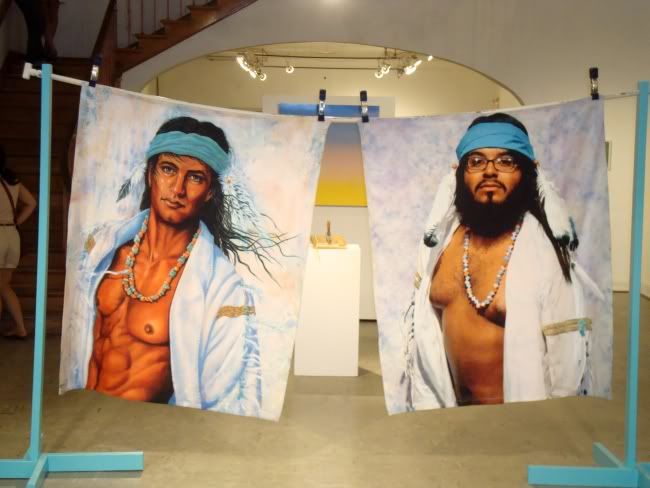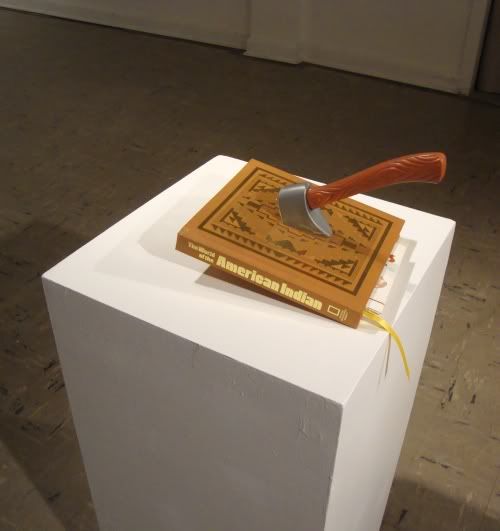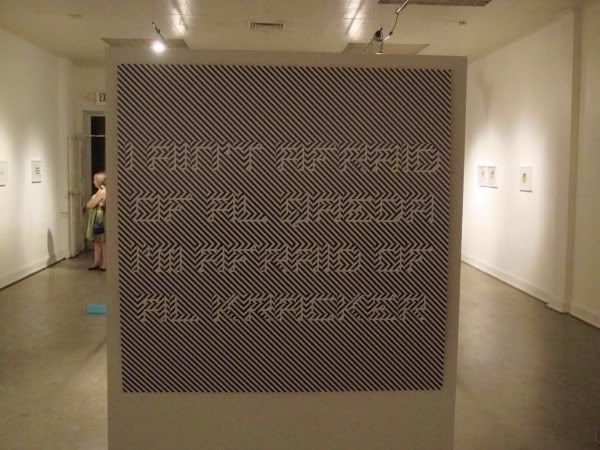Hüppi's art is latter-day op art. It is abstract, and he uses exotic paints, including metallic paint. It's really hard to photograph--I took a picture with no flash and with flash, and it's like I shot two totally different paintings. I think he uses some fluorescent paints in his work, and my flash must include ultraviolet light in its spectrum. The thing about this kind of art--geometric, optical, etc., is that it has a kind of lowbrow appeal. A friend of mine once referred to it as "van art," and I've heard the term "dorm room decoration" in relation to this kind of thing. (Ironically, I had a little Kenmore fridge just like this one in my freshman dorm room.) One thinks of Victor Vasarely and the optically vibrating rock posters of Rick Griffin and Victor Moscoso. There is also another influence that people associate with this kind of art.
Which reminds me of a story. I was a freshman in college, and I got it into my head to do a Victor Vasarely-style piece of art with red and green markers (colors that totally vibrated when placed next to each other). It was a grid with an undulating, bubbling surface. The markers really reeked though, so my roomie kicked me out of the dorm room for the duration. So I was sitting on the floor in the hall, patiently drawing this ridiculous piece of work, when two guys walk up. They weren't people I knew, but they were obviously students. They asked me about the piece and we chatted and then they invited me to lunch the next day. I went, and it turned out to be an evangelical Christian gathering, filled with people like me who had been likewise tricked into attending. But why did they pick me? One reason was that I was alone, and it's easier to gang up on a lone person. The other was that I was doing this freaky, psychedelic drawing. And the only kind of person who would be doing that is a druggy in desperate need of being saved, right? Ironically, while I wasn't a drug virgin, I was close. Certainly I wasn't the acid-head that this drawing might have lead them to believe.
So that's the other influence for this kind of art--LSD. And mushrooms, I guess.
I have no more notion if Hüppi's work is influenced by drugs than the two wandering God-botherers had about me. I make no assumptions. However, in honor of this psychedelic lineage, I have made a gif of one of Hüppi's pieces consisting of the version shot without a flash and the version shot with a flash.

Christoph Hüppi, Pipe No. ?, acrylic on board
All these pieces are named "Pipe No. XX", but I can't remember what number this one was. Actually, giving these abstractions a name like "Pipe" suggest one other influence: Peter Halley, whose geometric abstractions were given a pomo gloss by being identified by the artist as paintings of "cells" and "conduits."
The big show up in front was by Austin artist Carlos Rosales-Silva. He takes as his subject Hispanic and Native American identity. He plays with cliches that come from Anglo culture, but also from Hispanic culture. For example this untitled piece:

Carlos Rosales-Silva, untitled, custom fleece blankets, latex paint, wood, found objects, 2010
I'm guessing the guy on the right is Rosales-Silva himself, in all his highly unidealized glory. Show him a cultural cliche or two dealing with Native Americans, and he'll take a whack at it as well.

Carlos Rosales-Silva, Stop Me If You've Heard This One Before..., modified found objects
This next one I don't get. I see the op art quotation, but I don't see how the lowbrow text, an update of "No Viet-Cong ever called me nigger," has any particular relationship with Op Art. The only thing I can think of--and this is a stretch--is that Mohammad Ali made his famous statement in 1966, more-or-less at the same time that Op Art was at its height, and Op Art was definitely a kind of apolitical art. So maybe Rosales-Silva is taking non-engaged art to task. (I told you it was a stretch.) See for yourself:

Carlos Rosales-Silva, Op Art, archivally mounted digital print
If this is a jab at unengaged, purely optical art, it is ironic that it is being displayed in the same place as Christoph Hüppi's optical semi-abstractions.




Thank you for writing, and I love the gif!
ReplyDeleteF.Y.I.: The Christoph Hüppi artwork was curated by RJ Curatorial Experiences, Inc.